
Many parents want to give their children the best education possible at home.
Unfortunately, they don’t know how to go about the entire process. Setting up a Montessori classroom at home can be an enriching experience for the family.
Montessori classrooms have a specific layout and structure that helps foster independence and creativity in children.
However, most parents feel overwhelmed or unsure of where to start when creating one at home. If you’re not sure how to set up a Montessori classroom at home, read on to find out how to create one!
Basic Principles of Montessori Education
Some general principles guide Montessori philosophy. When setting up this system of learning at home, ensure you apply concepts such as:
1. Independence:
Children should learn to do things independently instead of relying on adults.
2. Freedom with limits:
Giving a child too much space leads to chaos, while too many restrictions leave them feeling helpless and unable to learn. The key is to provide a choice within boundaries.
3. Respect for the child:
Respect your children as unique individuals and strive to understand their needs and interests.
4. Meaningful work:
Structure the classroom environment so that children can choose activities they enjoy and learn simultaneously.
5. Prepared environment:
You must intentionally set up a classroom space to encourage learning. Design each learning area with specific goals in mind, from language development to fine motor skills.
Here are some tips for setting up a Montessori-inspired environment at home:
Focus on Your Child’s Interests
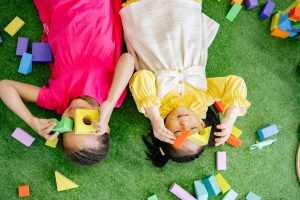
The most important thing is to find out what makes your child tick and enhance those experiences.
If your child loves art, mazes, animals, or dinosaurs, find books and educational materials that support that interest. Use every opportunity to talk about it or show it to friends and family when they visit.
Use Open Shelves and Bins Instead of Closed Cabinets
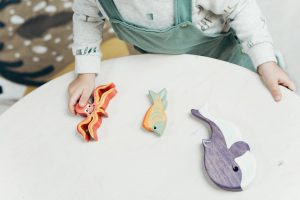
Use open shelves and bins instead of closed cabinets so that children can easily access the materials they need without help from an adult.
Arrange the bins and shelves by function so that similar items are grouped — art supplies in one area, toys in another, clothes in another.
Take advantage of vertical space by stacking items whenever possible to make room for many activities on a small footprint.
Use Low Shelves Within the Reach of Children
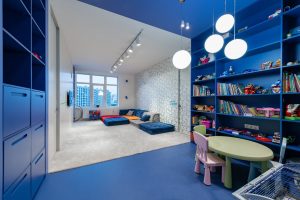
Putting shelves within a child’s reach ensures they choose materials independently and return them when they’re done.
Shelves should be no more than 36 inches off the ground and deep enough for the largest object on that shelf — usually about 12 inches deep.
Books should be arranged on shelves at the child’s eye level so that he can select books whenever he wants. Introducing books encourages an early love of reading.
Each shelf should hold objects related to one activity or concept, such as puzzles or language activities.
Give Children Space to Move Around
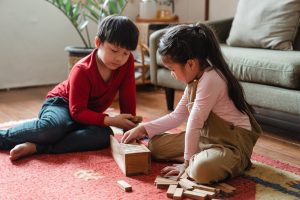
One of the most important aspects of setting up a Montessori classroom at home is making sure that there is enough space for the children to move around.
Ensure you choose a room with enough space so that children don’t knock the furniture over. Also, make sure there is enough room for them to stretch out and work on the floor without being crowded by other objects.
You’ll also want to provide enough space where they can engage in various activities as they explore using material found in the class.
Keep the Room Simple and Uncluttered
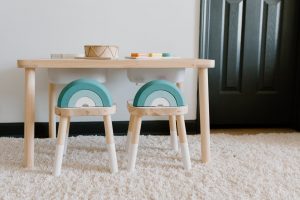
Montessori classrooms typically have few toys but plenty of equipment that allows children to explore language, math, science, and practical life skills.
For example, a language area might be stocked with objects that begin with every letter of the alphabet; a practical life area may include items such as dishes, sponges, and clothes that allow children to engage in everyday activities such as washing and drying dishes.
Have a Place for Everything
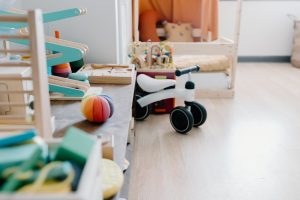
One of the most important principles of Montessori is that children learn best when they have a sense of order around them.
Every item must have its specific storage area. Knowing where things go makes it easy for children to put them away when they’re done.
Children don’t need to wonder where an item belongs because every object has its spot. A mental map or picture of their space is created in their minds, naturally leading to spatial awareness.
Give Your Child Real Objects to Use

One of the most important aspects of setting up a Montessori classroom at home is to provide your child with real objects to use.
Avoid using toys that are primarily made of plastic or other synthetic materials. Instead, focus on items that are natural and can be used for various purposes.
For example:
1. Wooden blocks can be used for stacking, building, and knocking down.
2. Balls can be used for rolling, throwing, and catching.
3. Beanbags can be used for sitting on, tossing, and carrying.
Real objects are important because they offer children a chance to explore and manipulate the world around them. Using real objects provides a sense of order and control that is essential for Montessori.
List of Materials to Use When Setting Up a Montessori Classroom
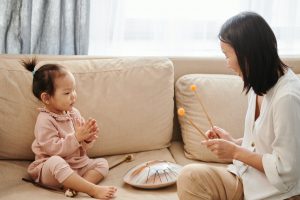
When you set up a Montessori classroom, ensure you incorporate playtime using real objects.
Using items they come across daily helps them learn the most important basic skills that will help them in the future.
1. Art supplies:
Have paper and pencils, markers, crayons, paintbrushes, and supplies available in the playroom so that children can express themselves through art whenever they have inspiration.
2. Dress-up clothes:
Children often like dress-up clothes for imaginative play. These can be items from home or thrift stores.
3. Puppets:
Puppets are another favourite for imaginative play. They can be hand puppets or finger puppets.
4. Pots and pans:
Your child may enjoy playing with pots and pans in the kitchen as you cook dinner.
Conclusion
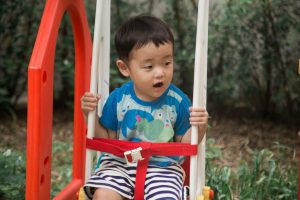
While traditional education is still the most common type of education globally, Montessori is gaining popularity among parents.
It’s an exciting approach to education because it focuses on self-directed activity, hands-on learning, and collaborative play.
Setting up a Montessori classroom at home can seem like a daunting task. The idea of following any set curriculum can feel frightening to those who haven’t done it before.
The best way to foster a Montessori type of learning is to attach them to the environment, and to their real surroundings. In doing so, the child learns to value and respect their own belongings.
We hope that this article has been helpful for you!
